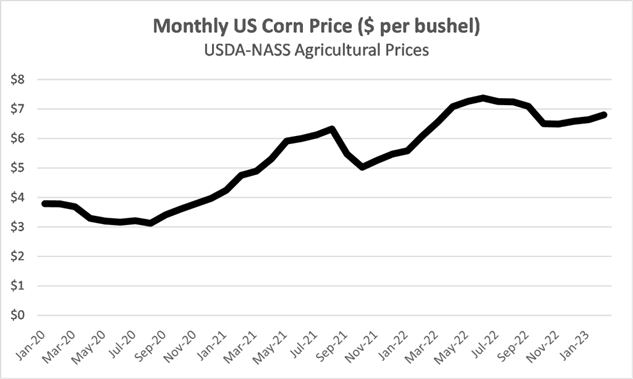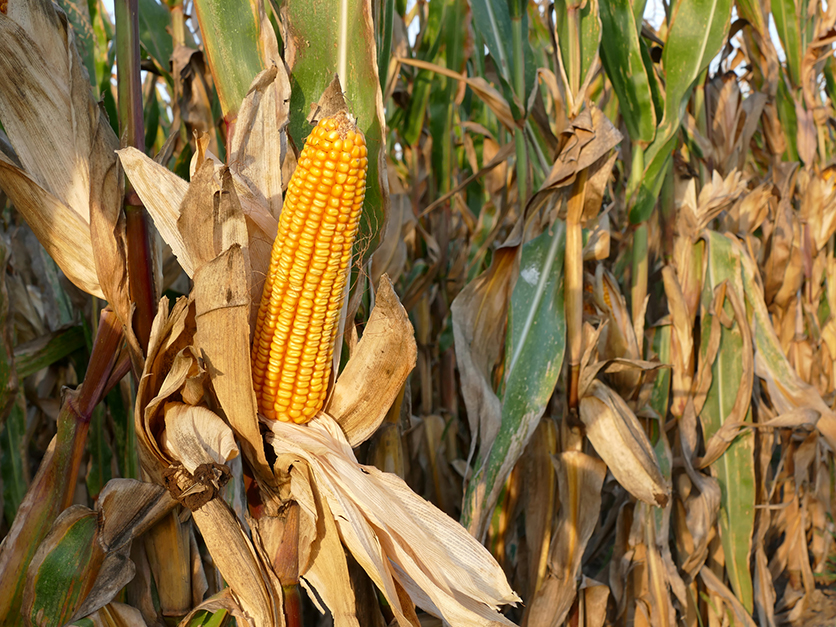Apr 05, 2023 | Kenny Burdine, University of Kentucky
Rising input costs have been constantly on cattle producers’ minds over the last couple of years, with feed costs often at the forefront. For some perspective, the chart below tracks corn prices received by farmers as reported in USDA’s monthly Agricultural Prices publication. Note that corn price has more than doubled since the summer of 2020, consistent with rising costs across most feedstuffs. Feed is a direct input cost for many cattle operations and impacts the value of feeder cattle as it is the most significant cost for cattle finishing operations. Given that feed costs are already at extremely high levels, the size of the 2023 crop will be critical.

We got our first official look at potential production on Friday, March 31, when USDA released their Prospective Plantings report. This report summarizes producers’ planting intentions in the US and is largely a reflection of expected profitability levels for various crops. Most notably, corn acreage was estimated to increase by roughly 4% from last year – to just under 92 million acres. For comparison, soybean acreage was projected to be virtually unchanged from 2022. New crop corn futures were nearly flat the day the report was released, with the December CME© corn futures contract closing at $5.66 per bushel.
Another important point is that actual planted acreage will adapt in response to further information, including this report. Using stocks-to-use from the most recent WASDE report to measure the supply/demand balance, the soybean market appeared to be tighter than the corn market. One could argue that soybeans are in more need of additional acreage than corn in 2023. While corn prices were essentially flat, the soybean market did move on Friday with an increase in new crop price of about $0.15 per bushel and an even more significant increase in old crop price. As I wrote this on Monday April 3rd, soybean futures were up again. While this picture will become clearer over the next couple of weeks, one could view this as an attempt to ration old crop beans and attract a few more acres to bean planting this spring.
Regarding implications for cattle producers, the acreage battle for 2023 is clearly on. Feed prices are currently high, and significant change is not likely before harvest. Additional corn acres would undoubtedly be seen as a positive from the perspective of livestock feed prices. Still, it is essential to remember that planted acres will react to information in the coming weeks. I would not be surprised if the new crop price ratio adjusted such that actual corn planted acreage came in below the Prospective Planting estimate. Most importantly, one must remember that acreage is just the beginning. With new crop corn prices on the board North of $5.50 per bushel, weather for the 2023 growing season will be critical in determining the direction of feed prices throughout the year.
The full Prospective Plantings report can be found here.














